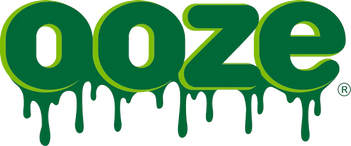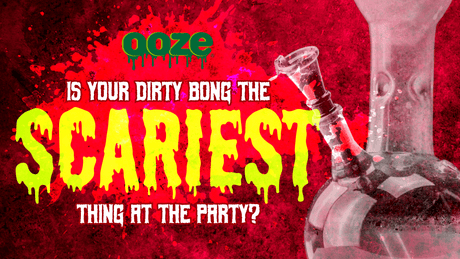Average price of a 1gram distillate cartridge from top-ranked dispensaries
To understand how much it costs to legally get high in the United States. we compiled prices from online menus for 1g distillate 510 vape cartridges in late summer 2025. Instead of selecting dispensaries at random, we looked at top organic search results in each state and chose the three dispensaries that ranked highest. For each store, we noted the three lowest-priced 1g distillate cartridges on the menu, averaged those figures, and treated that as the state's average price. Most prices are pretax and reflect publicly advertised sales or promotions.
Across the 36 states with adult use or medical programs selling high-THC distillate cartridges, the national average price was about $38.50 per gram. Prices span an enormous range: New Mexico, with more than a thousand licensed retailers and a glut of supply, sells carts for as little as $7. At the opposite extreme, Louisiana's tightly controlled medical program sees prices around $90 per gram. The accompanying chorpleth map visualizes this spread.

How prices differ by region
The updated data reveal several clear regional patterns:
- Pacific Northwest and Rockies: Mature markets like Oregon, Colorado and Washington remain some of the cheapest places to buy distillate carts. Oversupply from a record harvest and a multitude of dispensaries push average prices into the low teens.
- Southwest and Midwest: New Mexico and Michigan are the cheapest states in 2025. New Mexico's licensing rules created more than 1,000 approved dispensary licenses, leading to oversaturation and an influx of illicit product; wholesale distillate prices fell to $4,200-$4,600 per liter. Michigan's open license structure and hundreds of dispensaries have similarly produced oversupply and single-digit prices.
- South and Northwest: Prices climb as programs become more restrictive. Louisiana allows just two production facilities and nine dispensaries and imposes strict testing and a 7% excise tax; typical 1g vape cartridges cost $60-$70. Virginia still has few dispensaries and high prices, while West Virginia has limited supply and averages around $80. Florida's vertically integrated medical system and limited licensees keep prices high as well.
- High-tax states: High excise taxes and limited licenses make states like Illinois, Connecticut, and New York expensive. Illinois taxes cannabis up to 40% of the sale price and restricts store licenses, pushing concentrate prices into the mid-$70s. Connecticut's new adult use market has average item prices above $50, and New York's fledgling industry still has fewer than 50 licensed stores, keeping prices elevated.
Top 10 Cheapest States
| State | Average Price (USD) | Why So Cheap? |
|
New Mexico |
$7 |
Low barriers to entry have produced more than 1,000 approved dispensary licenses; oversaturation and illicit supply depress wholesale distillate prices to $4,200-$4,600 per liter. |
|
Michigan |
$8 |
Open licensing has allowed over 850 dispensaries to compete, leading to oversupply and some distillate carts priced under $10. |
|
California |
$12 |
The nation's largest cannabis market has thousands of cultivators; intense competition and budget brands push 1g carts into the low teens. |
|
Colorado |
$12 |
Mature adult use market; oversupply from record harvests and intense competition push prices down. |
|
Washington |
$12 |
Mature market with value-oriented brands. |
|
Rhode Island |
$13 |
Small but competitive adult use market where promotional deals make some carts as low as ~$13. |
|
Oklahoma |
$15 |
Extremely permissive medical market; hundreds of dispensaries compete, bringing carts into the high teens. |
|
Alaska |
$18 |
Recreational market with relatively low taxes; small population and competitive vendors keep prices low. |
|
Oregon |
$20 |
Oversupply and intense competition have driven average item prices down. |
|
Arizona |
$24 |
Competitive adult use market; promotional pricing often places carts below $25. |
Top 10 Most Expensive States
| State |
Average Price (USD) |
Why So High? |
|
Louisiana |
$90 | Only two production facilities and nine licensed dispensaries; strict regulations and a 7% excise tax keep prices high. |
| Virginia | $80 | Only a handful of medical dispensaries; 93% of patients say prices are too high. |
| West Virginia | $80 | Medical program with only a few operators; limited supply pushes prices up. |
| Illinois | $75 | High excise taxes (up to 40%) and limited competition elevate concentrate prices. |
| Minnesota | $60 | Early adult use rollout; only two medical operators were licensed to sell recreational cannabis in 2025, and supply constraints kept prices higher than in mature markets. |
| North Dakota | $56 | Small medical program; few dispensaries mean little competition. |
| Florida | $55 | Vertical integration and limited license holders under the medical program keep retail prices high. |
| Connecticut | $54 | New recreational market with high taxes and limited operators results in average items around $50. |
| Pennsylvania | $50 | Medical only; recent price drops have lowered costs but averages still hover around $35-$50 per gram. |
| New Hampshire | $50 | Very small medical program with just a handful of alternative treatment centers and limited product variety. |
States without high-THC distillate cartridges
Some states were omitted from the pricing analysis because no legal high-THC distillate cartridges were available when research was conducted. Tennessee, Texas, Wisconsin, and Georgia allow only low-THC or CBD oil products. Idaho, North Carolina, South Carolina, and Wyoming had no comprehensive cannabis program. Nebraska and Alabama had passed medical laws, but dispensary sales were not yet operational. These states appear on the map as "no data".
Why prices differ
Prices vary due to several structural factors:
- Market maturity and supply: Mature markets like Oregon, Colorado and Washington have oversupply from previous harvests, driving prices down. Younger markets like Louisiana, Virginia and West Virginia have few operators and limited supply, keeping prices high.
- Taxes and regulation: States levy excise taxes raging widely; consumers ultimately bear 44-73% of these taxes. High taxes and compliance costs can make legal products 30-50% more expensive than illicit alternatives.
- Licensing and rollout: Limits on store numbers (e.g., Illinois, Connecticut and New York) reduce competition, while open license markets like Michigan and New Mexico encourage price wars but may lead to market instability.
- Product regulations: Some states permit only low-THC or CBD-only products and prohibit smoking, meaning distillate cartridges are not available for the adult use or high-THC market and were excluded from our analysis.
To make your sessions truly budget-friendly, learn how proper coil and battery care can extend the life of your vape.
Methodology and notes
- Time frame: Prices were collected from dispensary websites in August-September 2025.
- Dispensary selection: In each state we looked at organic search results for "1g distillate cartridge in [STATE]" and took an average of the three highest-ranking stores.
- Price calculation: For each dispensary we recorded the lowest-priced 1g distillate cartridge and then averaged across the three stores. Prices are pretax unless noted and include publicly listed promotions.
- Legal exclusions: States without dispensary sales or low-THC-only programs were excluded or marked as "no data".
Sources
Information about product pricing, market conditions and taxes was drawn from a variety of reports and news articles. Michigan's oversupply and low pricing were reported by Bridge Michigan. Headset's industry dashboards provided average item and concentrate prices for Oregon, Washington, Colorado, Illinois, and New York. MJBizDaily and other trade publications chronicled price declines in Oregon due to record harvest. The Cannabis Benchmarks report on New Mexico's legal cannabis market explained how over 1,000 approved dispensary licenses and illicit supply havedepressed wholesale distillate prices. An MMJ.com guide highlighted that Louisiana's medical program has only two production facilities and nine dispensaries, strict compliance requirements and a 7% excise tax, which contribute to high prices. A Star Tribune article noted that Minnesota's adult use rollout began with only two medical operator and that prices remain high until supply meets demand. News outlets like Axios Chicago reported that Illinois' cannabis taxes can reach 40%, and analyses of tax burdens showed consumers bear a large share of these taxes and that legal products can cost 30-50% more than illicit ones.





